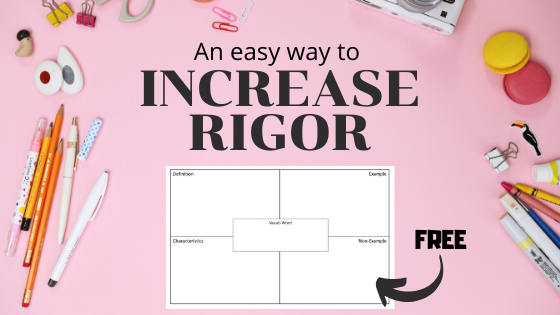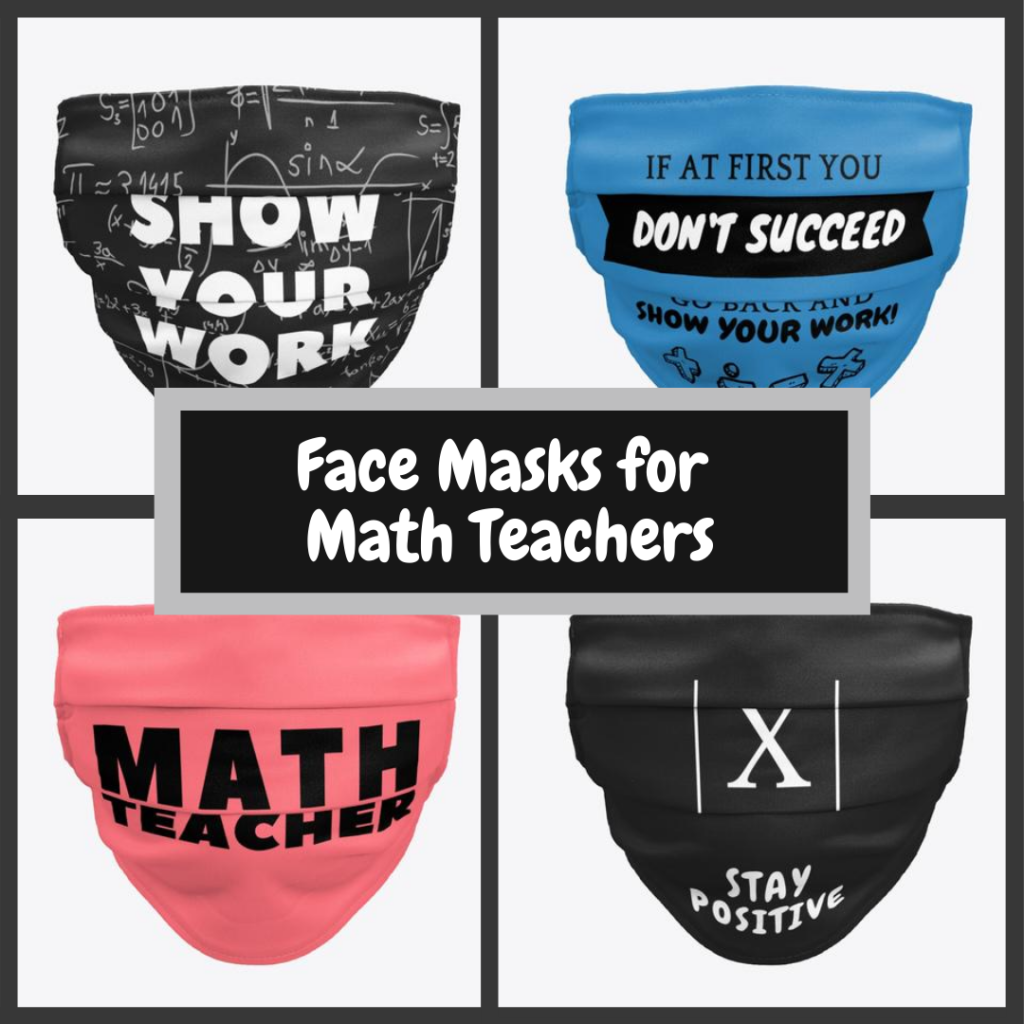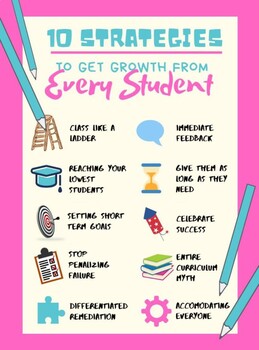
Plus a FREE resource to help implement!
A Lack of Rigor
Too often in education, we tell students what to think or what something means instead of allowing students to wrestle with a concept, take ownership over its definition, or discover its truths.
This is all indicative of a lack of rigor in our instruction. This lack of rigor causes students to become disengaged.
The brain loves to be challenged, to think critically, or to solve puzzles. However, it does not like to absorb large amounts of information that have no relevance or meaning. When the brain works, it burns calories. So to help it survive, it takes breaks, checks out, or zones out. The brain will also disseminate relevance when presented with new information. If information is not important, or meaningful, it will not work to retain this knowledge.
Thus, to help the brain engage with the information being presented, we need to increase rigor. Make the concept challenging in a meaningful way. Help students interact with the material so that the brain will more readily move it into the long-term memory section.
Work is Rigorous when Students must Construct their own Meaning
If you tell a student a mathematical truth, like to find 10% of a number you move the decimal point one position to the left, they might remember this fact – but since the learning was passive they likely will not remember it.
However, if a student discovers this truth on her own, and then writes the rule all by herself from her discovery, she will likely remember it for the rest of her life.
Even if you’re giving direct instruction, there should be a time where students take that information and make meaning of it.
An Easy Strategy to Increase Rigor
An Easy Strategy to help students construct their own meaning is to give them a Fryer Model Graphic organizer.

In a Frayer Model, students write the vocabulary term or concept being taught, and then have four separate boxes for them to flesh out, and organize, their knowledge of the word in the middle.
For example. If students were working on shapes, and you were teaching them about rectangles. You could give them lots of facts and images of a rectangle, as well as images of non-rectangles. After doing your teaching, you could give each student a blank Frayer Model note-taking sheet and have students complete with their own definitions, characteristics, examples, and non-examples.

By doing this, students would have to take the information that you had taught them, wrestle with it, categorize it, make meaning of it, and then explain it in their own words.
Impose Structure on Information
Teachers give students lots of information but rarely ask them to make any meaning of it. Yet this is how our brain works. We take observations from the world we exist in and start organizing it into categories in an effort to make meaning of our environment.
When students are forced to organize information on their own, it helps them understand it. This method will also help students retain the information longer.
Graphic organizers are a simple and easy way to accomplish this. And a good graphic organizer for your math class is the Frayer Model.
You can get it for free on Teachers Pay Teachers by clicking here.
If you do, I would greatly appreciate you following the TpT page for other great resources.

Want more great strategies to help you reach your students?
Here’s 10 Great Teaching Stategies, with 10 free resources





